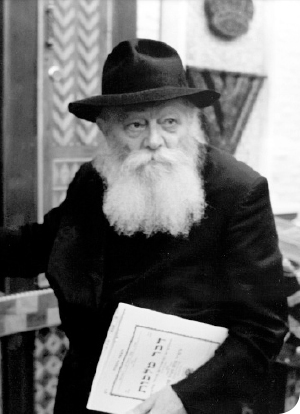THE ULTIMATE RESURRECTION
Moshiach is the one who proclaims “the time of your redemption has arrived,” and this announcement comes from 770. * Chapter Eight of Rabbi Shloma Majeski’s Likkutei Mekoros (Underlined text is the compiler’s emphasis.
 12. […] Recent world events have involved “the offspring of Yishmoel” (mentioned at the end of this week’s parsha). In general, our Sages ascribe significance to “kingdoms [being] in conflict with each other.” Indeed, it is one of the signs of redemption, as stated in Midrash: “If you see kingdoms in conflict with each other, look expectantly for the feet of Moshiach.” This is especially the case regarding “the offspring of Yishmoel,” as stated in Yalkut Shimoni, “During the year that Melech HaMoshiach is revealed…the king of Persia confronts the Arabian king … all the nation are in an uproar and in a state of crisis.” (At present, the crisis of the nations of the world is plainly apparent; they are at a loss as to how to proceed and brainstorm various approaches, etc.) At that point, G-d Alm-ghty tells the Jewish people, “My children, do not fear. All that I have done I have done only for your sake … the time of your redemptions has arrived.” And it continues: “Melech HaMoshiach…stands atop the roof of the Beis HaMikdash,* and announces to them, to the Jewish people, saying, ‘Humble ones, the time of your redemption has arrived’” – as has been proclaimed and announced, particularly of late.
12. […] Recent world events have involved “the offspring of Yishmoel” (mentioned at the end of this week’s parsha). In general, our Sages ascribe significance to “kingdoms [being] in conflict with each other.” Indeed, it is one of the signs of redemption, as stated in Midrash: “If you see kingdoms in conflict with each other, look expectantly for the feet of Moshiach.” This is especially the case regarding “the offspring of Yishmoel,” as stated in Yalkut Shimoni, “During the year that Melech HaMoshiach is revealed…the king of Persia confronts the Arabian king … all the nation are in an uproar and in a state of crisis.” (At present, the crisis of the nations of the world is plainly apparent; they are at a loss as to how to proceed and brainstorm various approaches, etc.) At that point, G-d Alm-ghty tells the Jewish people, “My children, do not fear. All that I have done I have done only for your sake … the time of your redemptions has arrived.” And it continues: “Melech HaMoshiach…stands atop the roof of the Beis HaMikdash,* and announces to them, to the Jewish people, saying, ‘Humble ones, the time of your redemption has arrived’” – as has been proclaimed and announced, particularly of late.
So may it be for us, that all Jews leave exile, “with our youth, our elders…with our sons and our daughters,” including babies born (or who will be born) on this Shabbos (or close to it). All of them together (including the Jews of all proceeding generations – “they shall get up and sing those who dwell in the dust**”) come (“with clouds of the heavens”) to our Holy Land, to Yerushalayim the Holy City, to the Temple Mount and the Third Beis HaMikdash, and we will immediately merit to hear “a new Torah shall issue forth from Me.”
NOTES:
*Footnote 108: To note the diyuk (the precise terminology employed) in the Midrash, “He stands atop the roof of the Beis HaMikdash,” for the rooftops were not sanctified (P’sachim 85b, end; Rambam Hilchos Beis HaBechira 6:7). This detail alludes to the notion that the proclamation “Humble ones, the time of your redemption has arrived” is issued from the Diaspora, which was not sanctified with the sanctity of Eretz Yisroel, reminiscent of the difference between the roof of the Mikdash and the inside of the Mikdash itself.
**Footnote 111: To note the aphorism of the Rebbe Rashab nishmaso Eden (HaYom Yom 11 Sivan) in explaining the concept of the resurrection of the dead in spiritual terms: When the brain, which is cold (like a corpse), understands and relates to, and reacts to a G-dly idea – that is “the true resurrection of the dead.”*** In light of this we can also explain the concept of “they shall get up and sing those who dwell in the dust” in terms of spiritual service: The concept of the resurrection of the dead is achieved by first being bittul (nullified to G-d) in a manner that “makes a person one who dwells in the dust” (see Sota 5a).
***Note: This chiddush is especially underscored in the Rebbe [Rashab] nishmaso Eden (“the Rambam of the teachings of Chassidus”), for his maamarei Chassidus place tremendous emphasis on the Chabad process of understanding and the conceptualizing that takes place within human intellect (cold intellect). In this vein, he places great emphasis on this chiddush about the perception and response to an intellectual concept being tantamount to the resurrection of the dead.
(From the address of Shabbos Parshas Chayei Sara, 22 MarCheshvan; Seifer HaSichos 5751, pg. 138-9)
 July 21, 2016
July 21, 2016
Reader Comments